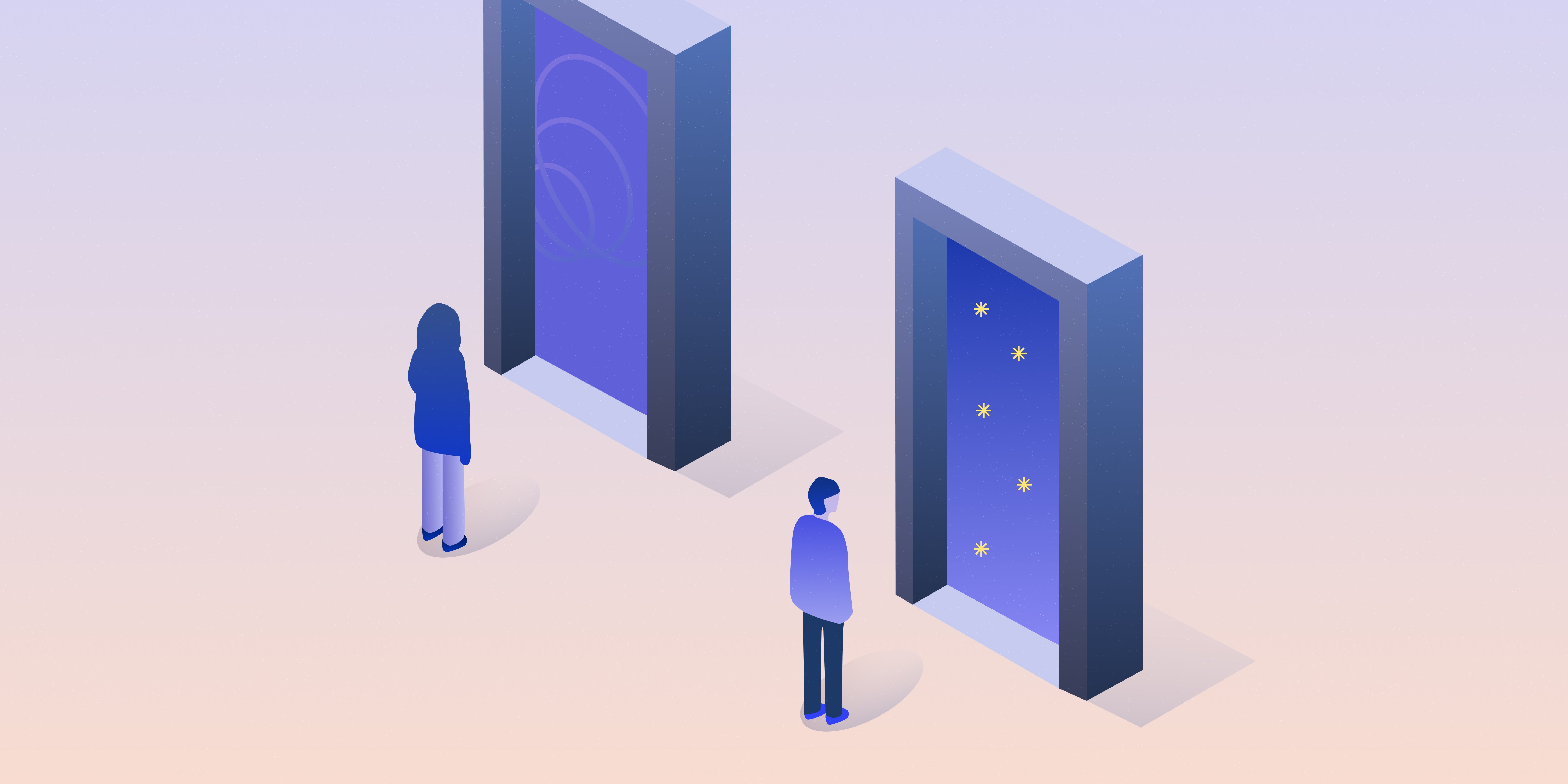
In UX, customer archetypes and customer personas are tools teams use to summarize their user data and bring users to life in an approachable, memorable, and actionable way.
Using these tools, product teams have clear guidelines for who will use their product and the needs of those users. Despite these similarities, personas and archetypes vary slightly in their presentation and contain different content. Understanding these differences will help you make the best choice for your team.
Let’s look at the similarities, differences, use cases, and benefits of each.
What is the difference between a customer persona and a customer archetype?
Archetypes and personas should be created carefully — based on thorough user data or market research. Although the differences between them appear minimal on the surface, the differences are nuanced.
Let’s start with the definitions.
A customer persona is a fictional representation of a user or target customer based on representative data from user or customer research including goals, needs, and pain points while using a product or service.
Personas are paired with a catchy name, a fictional image of a user (representing one person), and user demographics to make the persona come to life with details as close to a real person as possible. On the other hand,
A customer archetype is a representation of a group or type of user based on behaviors and customer research. Unlike a persona, archetypes are not depicted as a singular person. They emphasize shared behavioral patterns rather than specific demographic details.
They’re less about personal attributes and more about the universal traits and motivations that define your target audience. Customer archetypes include a representative name, mindset/description, and also commonly include user needs or goals, pain points, and opportunities.
An example of a customer persona
Imagine you’re designing an app that allows people to find, connect with, and leave reviews for local restaurants and businesses.
Here’s what two of your personas might look like:
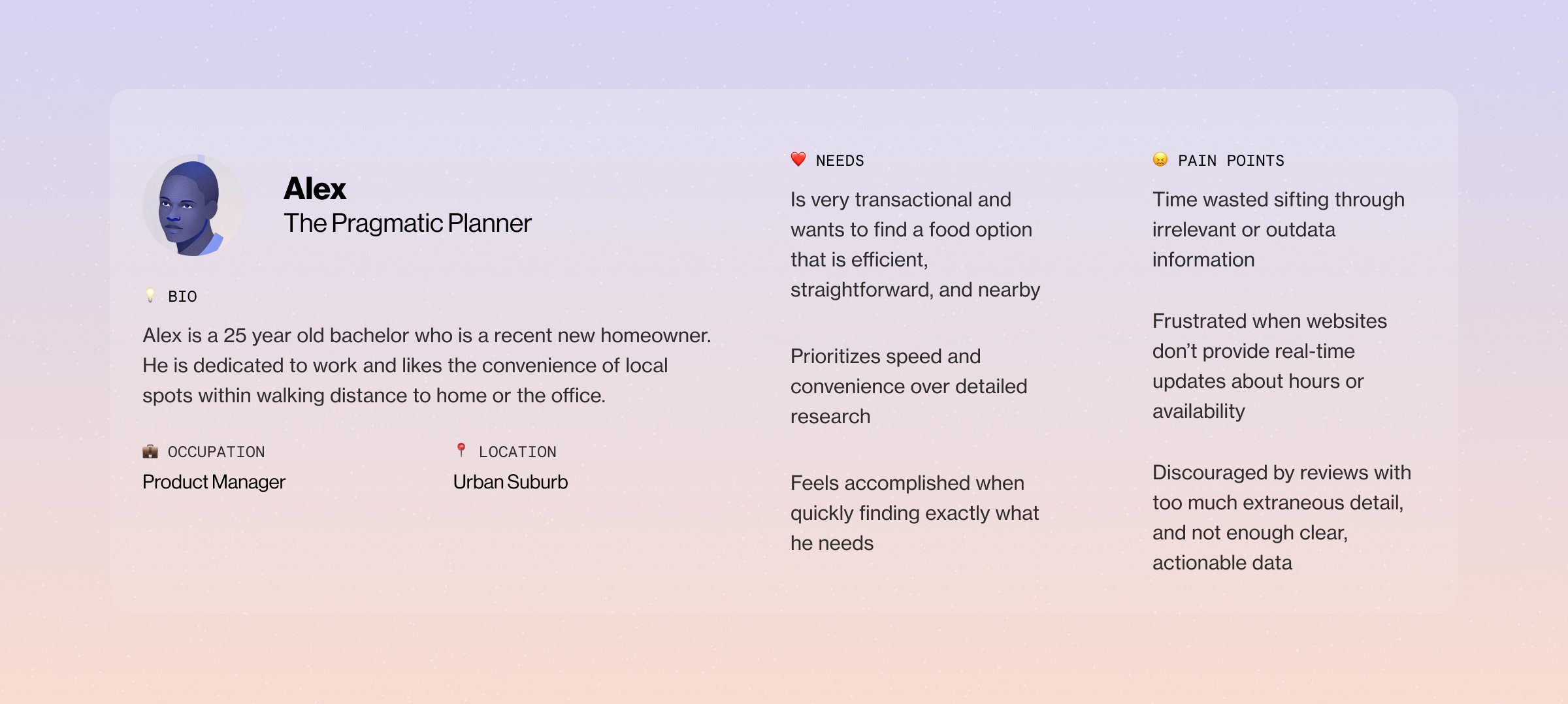
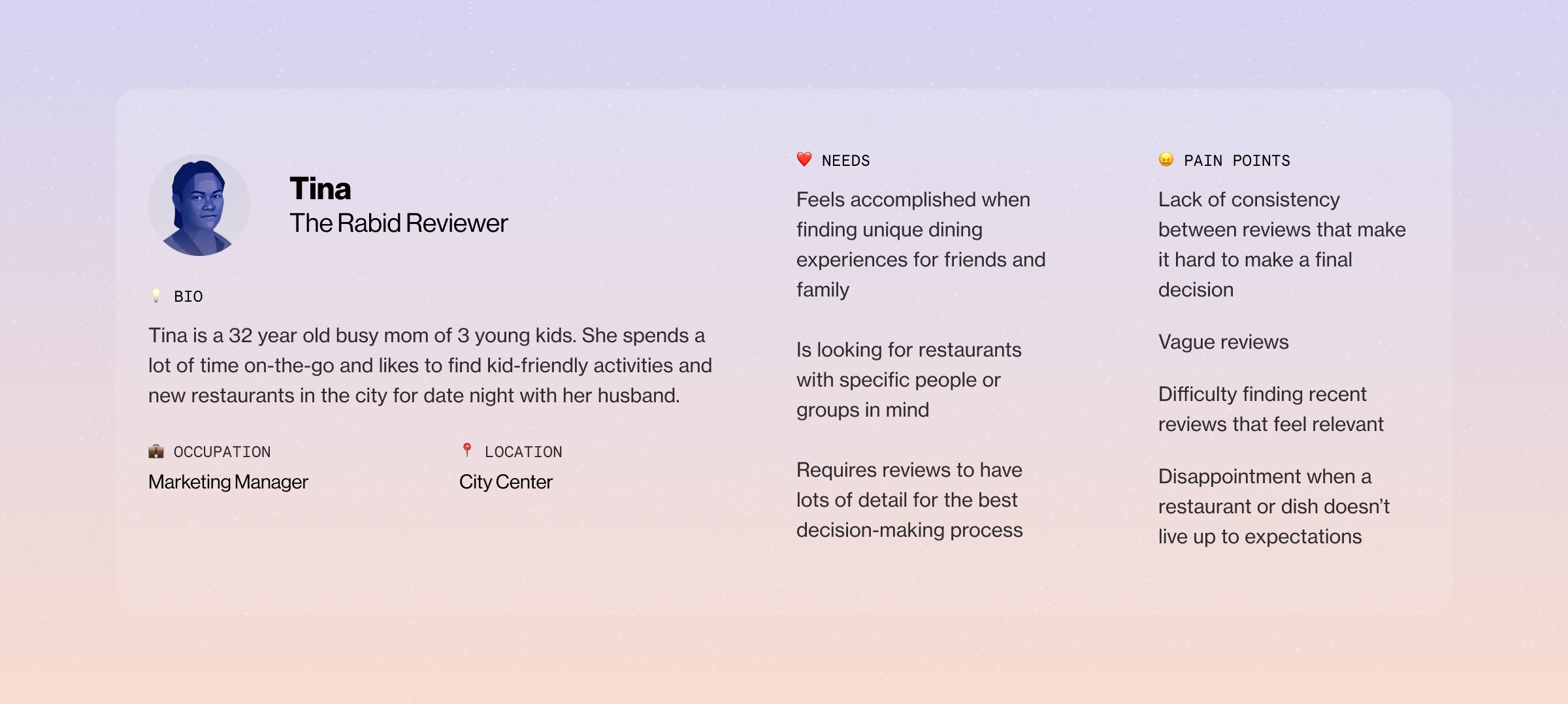
💡Tips for Practitioners:
Be wary of adding too much demographic information to your personas, as it can muddy the waters, introduce bias, and be a hindering factor to using personas effectively.
An example of a customer archetype
Using the same user scenario as above - using an app to find, connect, and review restaurants and businesses, here’s what those might look like as archetypes:
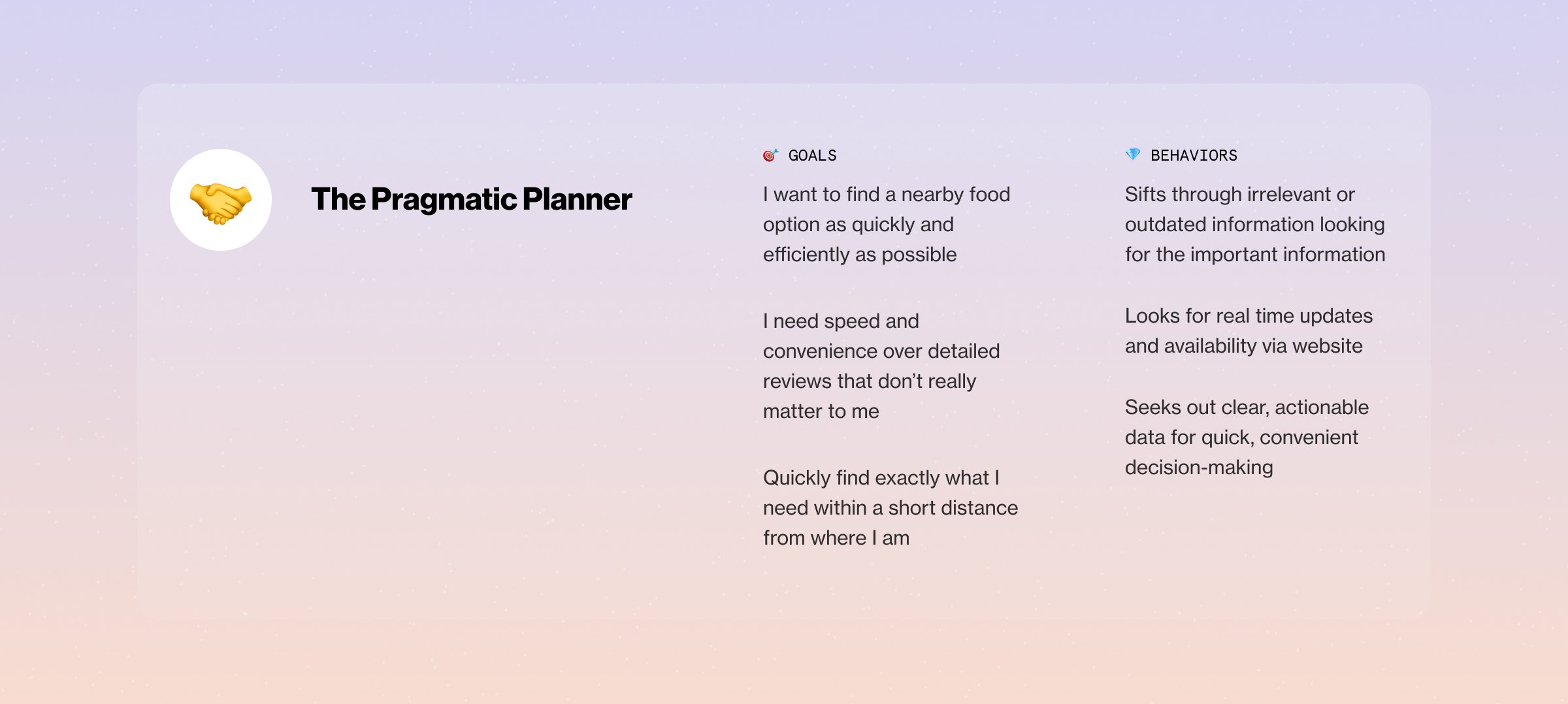
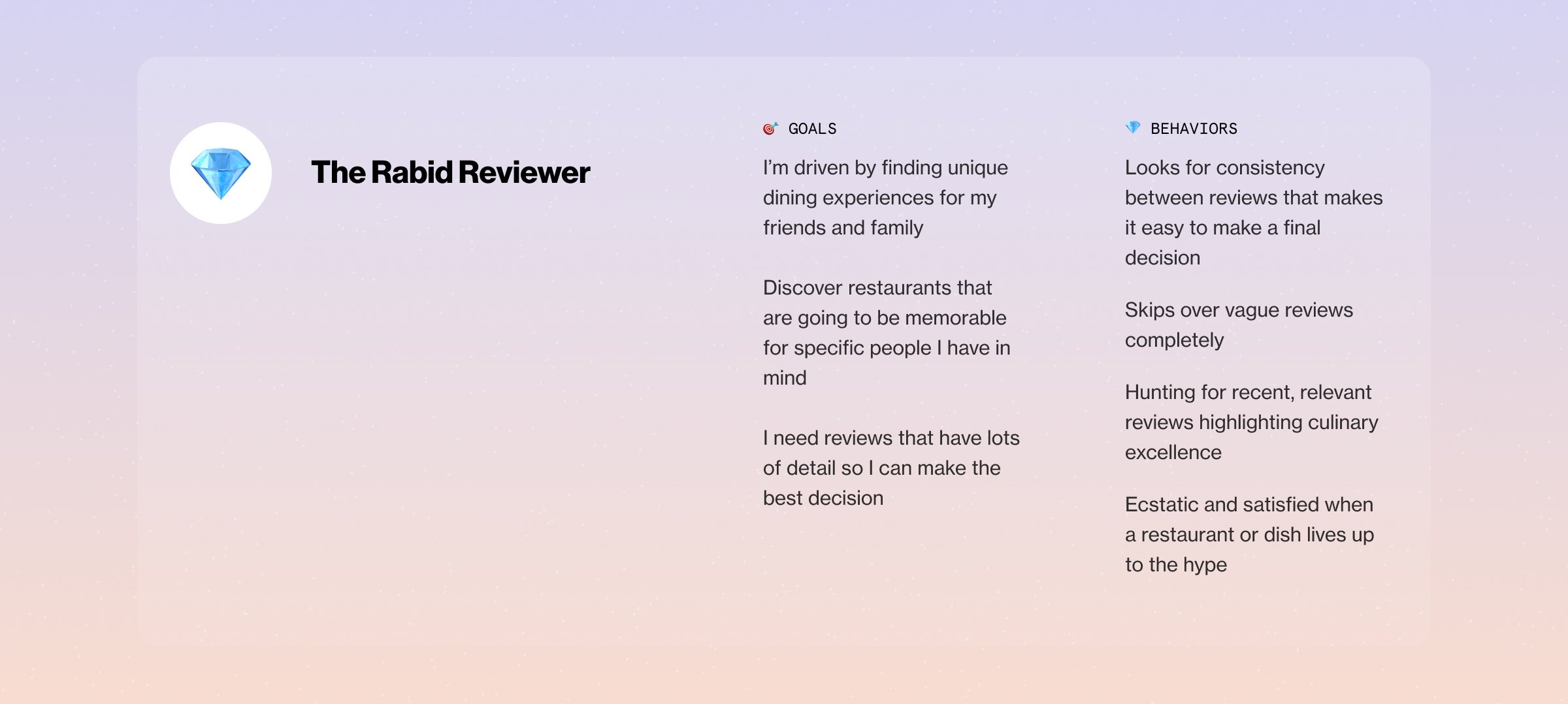
Archetypes vs. personas: Which should I use?
Choosing between the two ultimately depends on the needs of use of the artifact and your company’s culture. For example, is the need for a persona or archetype to inform demographics or user behavior? Is it for general consumers or role-based personification? Ask yourself:
Do my stakeholders have a preference?
Some stakeholders may construe the terms and believe that everything is a ‘persona’ though, based on the definitions we outlined, this may not be true. Making sure stakeholders understand the needs and goals of creating either, since what is contained in them is much more important than the name.
If your stakeholders are more likely to resonate with straightforward user data to illustrate behaviors, needs and motivations linked to the use cases, archetypes are the way to go. But, if they need a more detailed, relatable profile to connect with your customers, personas may be the better choice.
Is one more aligned with our company culture?
It’s important to consider the history of this type of research. The main goal to keep in mind is to use the artifacts to influence product development and gain adoption. Researchers should consider this history to figure out which would be the most widely adopted artifact.
If they are not adopted because people across the organization don’t believe in the approach, then the research and subsequent artifacts will be rendered useless.
Companies that typically use personas might find it harder to adopt archetypes, as archetypes focus on customer groups rather than individual people. Or they may have a resistance to personas based on other areas of the business that use them, like marketing. Choosing the approach that resonates most with your team and overall company is critical to the success of future product decisions.
Are there upsides or downsides to personas and archetypes?
Both personas and archetypes have pros and cons. Personas are usually easier to remember because of their catchy names and faces.
However, it can be easy to get bogged down in irrelevant demographic data that doesn’t impact the users’ goals and motivations. Personas can introduce bias. For example, if you mention in a persona that Rachel, a customer, is 46 years old with two kids, that might introduce unnecessary demographic information into ideation for product improvement, even if that may not be true for other users that this fictional person is representing. Personas can be less flexible as they become tied to specific needs, aspirations, and goals of an individual, rather than a broader mindset.
Archetypes are more flexible because they can be a representation of multiple demographic details that don’t segment the audience. They’re much more inclusive as they exclude gender, age, income, etc.
Archetypes can be specifically powerful for role-based profiles, like different employees utilizing the same tool where their context may be very similar, and demographics could be identical, but their goals based on responsibilities are very different. This means the usage of the product or tool will naturally be different.
Archetypes are more about what users need, how they think, and how they behave - not just who they are demographically. The downside is that because archetypes are a less personal approach, it could be harder for people in the company to connect with emotionally or remember them.
Why should I invest in customer personas or customer archetypes?
When it comes to product design, personas and archetypes make it easy to create products with your users in mind. Invest in creating them if:
You’re building a product from scratch
If you’re designing a new product or experience, keeping your customers in mind is vital to creating a user-centered product that resonates with the right people.
You need a gut check on prioritizing existing products
You can use personas and archetypes to audit your existing customer experience and figure out your best opportunities for improvement. When you look at your product through the lens of your customers and their specific needs, it can be easier to see where your current product might be missing the mark, and where a feature overhaul might be needed.
You want to avoid major product fixes post launch.
When you know exactly what your users hope to accomplish with your product, your design decisions are much easier. Confident decisions help you get the product right the first time and avoid major product fixes down the road, which ultimately save time and money.
You don’t want to leave key users behind
When you conduct research up front and know the exact users you’re designing for, you’re less likely to overlook key audiences.
How many user personas or archetypes do I need?
The sweet spot for most products is 4-6 personas or archetypes. Any more than that and you risk confusing designers by making it hard to know who you’re designing for.
Your customers have different reasons for interacting with your product (and having a need for it in the first place), so creating multiple personas or archetypes helps you understand and categorize the differences.
How often should I update my personas or archetypes?
If you’re reviewing your personas or archetypes and they stop reflecting the customer feedback you’re receiving through various channels, that should raise a red flag and prompt you to re-evaluate them.
Of course, it doesn’t hurt to periodically revisit your personas, especially if you have the resources. Conducting foundational research to refresh your personas or archetypes every couple of years ensures you’re still on track and helps uncover necessary adjustments since user needs and motivations evolve over time.
When your industry faces rapid change or you want to change your product significantly, it can be helpful to re-evaluate your personas more frequently to ensure that your customers’ goals and motivations align with the changes.
How do I create customer personas and customer archetypes?
Once you decide the best approach for you and your team, it’s time to conduct the primary research that will inform your personas or archetypes. The most effective way to build reliable personas and archetypes is through in-depth customer research.
Related: How many research participants do I need for sound study results?
If you have a research team internally, they may have already conducted this research with your customers. But if you’re starting from scratch, you can either partner with a research firm that specializes in in-depth research or take a more grassroots approach by talking to your current customers.
With either approach here’s what you’ll want to find out:
- What situations arise in customers’ daily lives that motivates them to use the product?
- What options do they have available, and how do they decide which one to use?
- What’s their state of mind when they decide to use it?
- What goals are they trying to achieve using the product?
- What else do they hope to get out of using the product?
- What challenges do they face using your product?
For personas, in addition to the above questions, you’ll need a large set of quantitative data to build the demographic profile of the persona. Some teams build personas based solely on segmentation, not through in-depth quantitative research, though we would recommend that any research conducted should be fine tuned to your product or service for the most accurate artifacts.
Once you have your data, we recommend using a grounded theory approach to synthesize your findings and let groupings naturally emerge from the data. Depending on the product or service space and scope, you may have anywhere from 2-6 or more user personas or archetypes.
Where do thinking styles fit in?
If you work in the product development space, thinking styles might also ring a bell.
Like personas and archetypes, thinking styles are a form of archetype that summarize user data that dives deeper, underlying motivations, and helps make sure your products and experiences are user-centered. However, they’re much less product-centric than personas or archetypes.
What are thinking styles?
While personas and archetypes focus on a person’s goals and needs when interacting with your product,
Thinking styles are a flexible type of user archetype based on emotional or contextually-driven motivations for needing a product.
For example, say you’re conducting research for a website that sells event tickets. A persona or archetype might highlight their needs while using a website to buy a ticket, but a thinking style would explore the emotional or contextually-driven aspect driving the need to find a website that sells event tickets. Why do they want the tickets in the first place? Maybe it’s to spend time with friends or to avoid being alone on a Friday night.
Thinking styles can be seen as “hats” your customers wear at different points in time; they can switch hats depending on their context or situation. If we examine the event ticket scenario further, a customer may one week be looking for group tickets to a rock show to celebrate a friend's birthday, and the next week grab a last-minute solo ticket to go and see their favorite comedian.
This flexibility shows that customer expectations and motivations are not set in stone, and are strongly rooted in their emotions and the context of their daily lives. The products we design should cater to these.
What makes thinking styles unique?
Thinking styles are created from a deep understanding of the problem space, while personas and archetypes emerge from an understanding of the solution space. In other words, they’re solution agnostic.
How thinking styles are created
At Blink, we create thinking styles using a method called deep listening interviews pioneered by researcher Indi Young. In this style of interview, researchers listen closely to underlying motivations without a structured discussion guide.
We ask open-ended questions like, “Tell me about the last time you bought a ticket. What were you considering? How were you feeling?” to let the insights flow naturally. The purpose of these types of interviews is to draw out user needs and motivations long before they actually begin interacting with the product, or considering that they even have a need for that type of product at all.
The differences between personas and archetypes are nuanced. Choose which is best for your team.
The real value of thinking about your customers in these ways — personas, archetypes, or thinking styles — is that they’re proven and grounded in thorough research.
I love to see how these tools evolve, especially thinking styles, which narrow in on what purpose a product serves for people.
Regardless of which you choose, it’s important to use the right methods to create them carefully. If not, you could end up with a half-baked persona or archetype that doesn’t reflect your customers. When you design a product based on incomplete data about your users, you risk missing the mark and negatively impacting your brand.
Put in the effort to create a solid customer baseline with user research, circulate your personas or archetypes around the company, and make sure they make sense to everybody.
Deep research leads to better decision-making
If you need help creating or updating your user personas, archetypes, or thinking styles, reach out to Blink to see if we’re a good fit.
